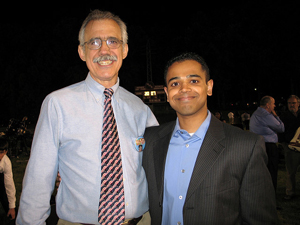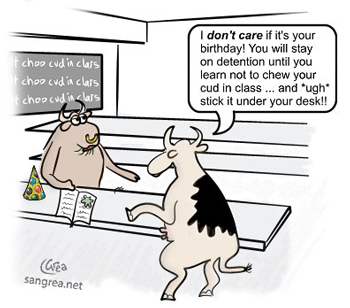
Source: Deryl Matthew Butler-Porras - Student Senator, dickinsonstateu, Flickr
In this section, you will learn how to punctuate relative clauses. In relative clauses, commas help assign importance to the information you add to the sentence. Nonrestrictive or nonessential relative clauses require commas. If the information is nonessential (i.e., extra, spare, additional, supplemental, a surplus, a bonus, or even redundant), add a comma or commas. Read the following example:
The teacher, who was the former wrestling coach, stopped me in the hallway and asked about my grade on my math quiz.
The information in the relative clause who was a former wrestling coach appears to be nonessential and needs to be separated by commas. However, it is ultimately the writer's or speaker's intent and the context of the sentence that determines whether "that" or "which" is appropriate and whether commas are needed. Who really cares whether the teacher was the former wrestling coach? If the information is irrelevant—like wrestling coach—to the fact that you were stopped in the hallway, the clause needs to be distanced from the relevant information in the sentence by using commas.

Source: IMG_2568, JVarghese81, Flickr
On the other hand, restrictive or essential relative clauses do not require commas, as in this example:
The teacher who gave me the bad grade turned out to be my favorite.
In this sentence, the noun being explained, the teacher, is too general without the relative clause, who gave me the bad grade. It can’t be removed from the sentence without obscuring or losing the identity of the teacher. This essential relative clause is not set off by commas.
In the next three sentences, decide if the relative clauses are essential or nonessential. Note: To avoid giving away the answer, the sentences do not contain any internal punctuation.


Source: Chewing the Cud, Grea, sangrea.net
1. The cow who chewed his cud in school was punished with detention.
2. The cow whose coat was marked with a black spot supervised the detention.
The next question does not refer to the cartoon or picture above. Respond based only on the text.
3. The cow that had the longest tail switched on the lights.
In review, nonessential relative clauses are set off by commas when they occur in the middle of the sentence. When you edit, be aware of adding the second comma.
If a contrasting expression appears at the beginning or at the end of a sentence, it needs only one comma. For more rules on using commas, see “The Common Comma” in Punctuation in the Related Resources.